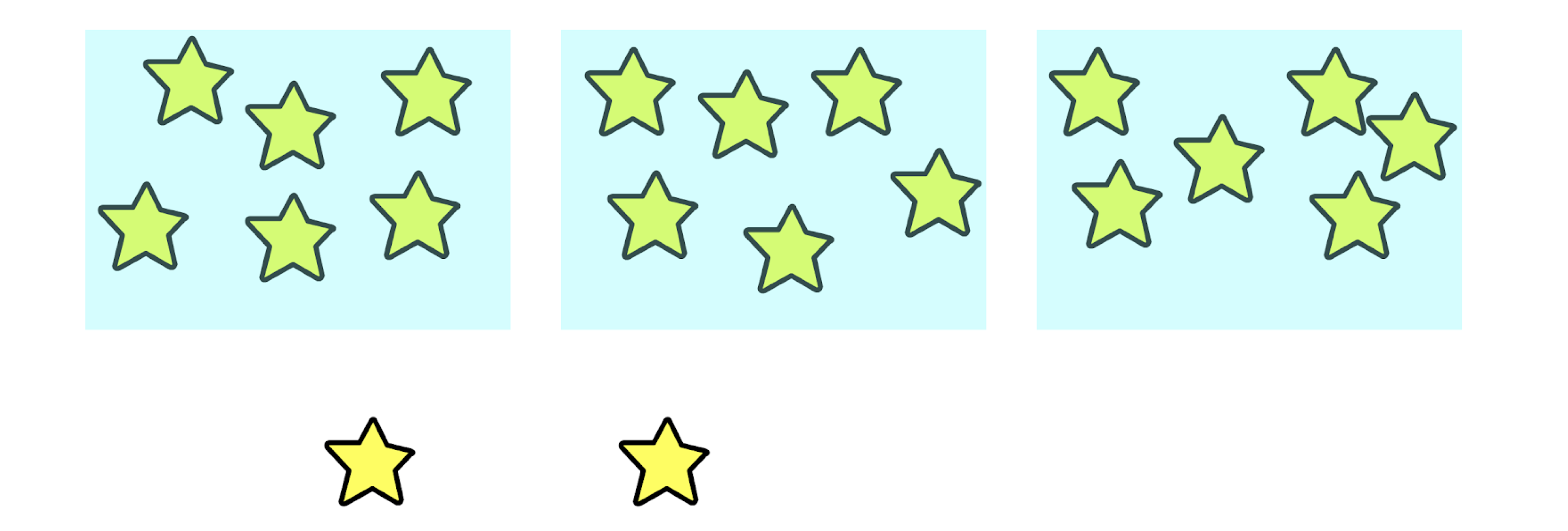Explorations and Games
Learning Goals:
Build a deeper understanding of the division operation and remainders
Divide using a variety of tools and strategies
Materials:
- One Dice (see this page for a foldable dice)
- 20 small objects (could be crayons, pasta, beans, small toys, squares of paper)
OR - Use the Mathies Set Tool to generate and sort 20 objects
- Pencil and paper
Playing the Game:
This is a game played in partners. Use a page to keep track of the score across rounds.
(See one-player version in Adaptations & Extensions below)
The first player rolls the dice. That player needs to divide the 20 small objects equally
amongst the number of groups shown on the dice.
For example:
3 is rolled, so the 20 items are shared across three groups

If there is a remainder, the player records the number of remaining items on the paper and
that is their score for the round. For example, the player here would earn 2 points because
the remainder is 2.
Players may earn a bonus point in a round if they can predict the remainder before
they physically divide the objects into groups.
After each player has had 10 turns, players add up their remainders/points.
The player with the most total points wins!
Questions and Prompts to Support your Child:
- How did you figure out that remainder?
- How could we figure out this remainder? (perhaps before moving the objects)
- What does the remainder mean when dividing?
Extensions & Adaptations:
- ***If playing without a partner, play can continue with the goal of achieving the highest
possible score. A total score of 8 or more after 10 rounds would be a success!*** - Changing the number of objects is a great way to mix-up and replay the game – try a
larger or smaller amount between 15-30 - Using the Mathies Set Tool is a great way to digitally work with sets of objects!
Categories: Elementary

